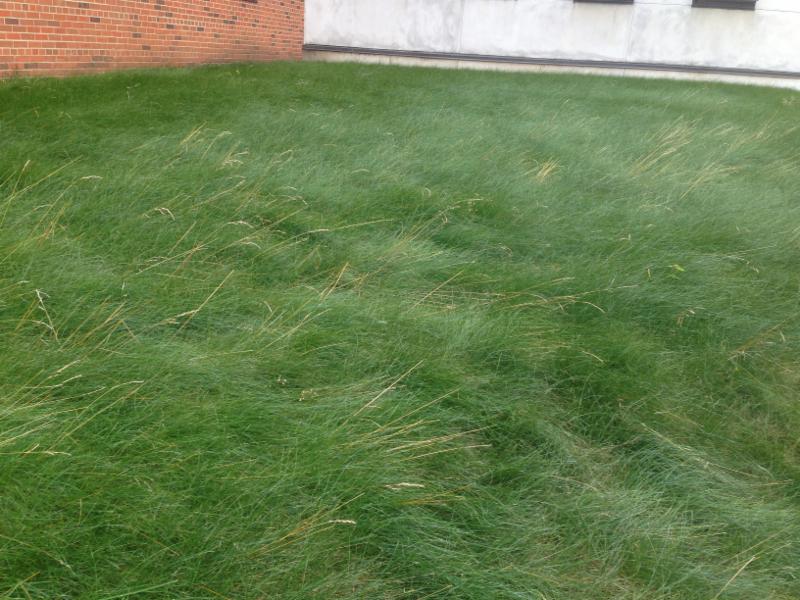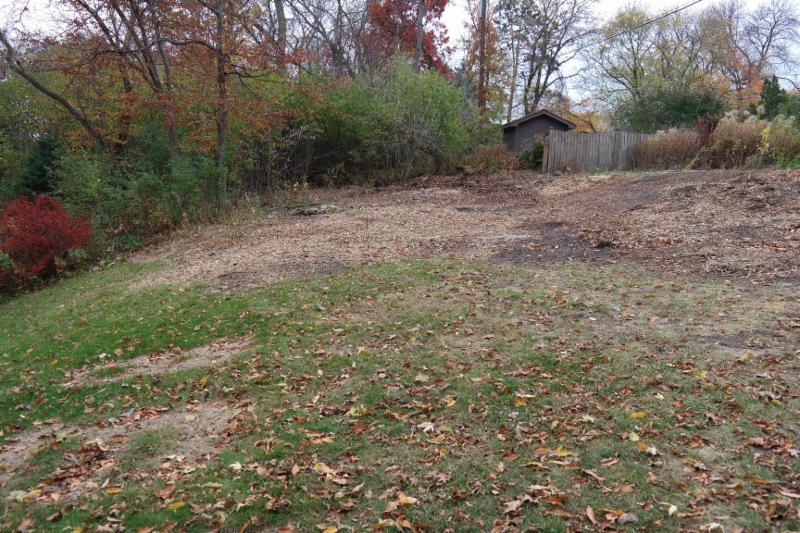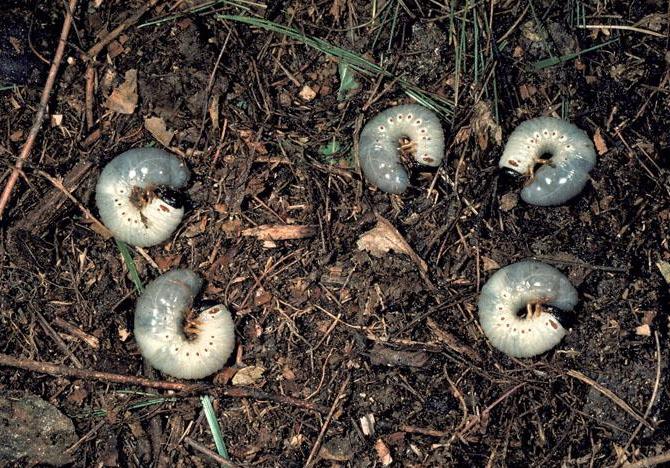Lamb-Ricotta Meatballs in Tomato Sauce
|
|
1 ½ pounds
ground lamb
1 cup ricotta
3 eggs
½ cup Parmesan
3 tsp smoked paprika
½ cup chopped parsley
1 tsp salt
½ tsp pepper
1 cup flour
3 Tablespoons
olive oil
(2) 24 oz jars of
Marinara sauce
Place Marinara sauce in large pot or crockpot set over medium heat.
In a large bowl, combine lamb, ricotta, eggs, Parmesan, paprika, parsley, salt and pepper. Using about ¼ cup lamb mixture, form meatballs. Gently roll in flour. Add oil to large saute pan over medium heat.
Brown meatballs in oil, 2-3 minutes per side. Simmer in tomato sauce 1 hour until cooked through.
|
|
|
Growing Grass under Trees
|
|
| |
Trees and turf grass were never meant to live together. Trees evolved in the forest with twigs and leaves as a ground cover. Grass evolved in the prairie with full sun all around. So what happens when we put these two plants together? Nobody is happy. Grass and trees will fight for the same resources: sunlight, water and nutrients. In regards to sunlight, trees will always have the advantage over turf.
Like most plants, grass produces a bright pigment called chlorophyll. But chlorophyll isn't just for eye candy. It also figures importantly in the process of photosynthesis, by which plants convert an inorganic material (light) into a useable, organic one (sugar).
Chlorophyll absorbs blue light and red light well, reflecting green light, which accounts for your lawn's color. The tree leaves will be capturing the blue/violet rays, and orange/yellow rays. The light that passes through the canopy and into the turf is mostly green/yellow light. Can the turf use that? Nope. A lot of that green light that comes through the tree canopy can't be used by the grass at all. Both plants are looking for the same spectrum of light. Without light, the grass plant weakens and dies. Lack of light and high humidity under trees also create pest problems for grass: powdery mildew, rust, dollar spot. Shade-loving weeds such as moss, algae, creeping Charlie, violets and chickweed gain a competitive advantage over turf grass.
What can you do? Use a Low-Grow or No-Mow fine fescue grass under your trees. Fescues are both sun and shade tolerant. Some people say they have been planting shade grass for years and it's still just creeping Charlie. I will tell you that there is no criteria for what is called "Shade Grass Mixture". You can go to your big box stores, and even though it's titled Shade Grass, that doesn't mean anything.
Finding 90-100% fine fescue blends may take some effort. You can buy individual species and mix them together: hard chewing fescue, sheep fescue and creeping red fescue. Try several garden centers or check online distributors that sell fine fescues. Instead of just asking for a shade or low-input grass mix, read the label to find the contents of each seed mix.
These grasses take less sun, water, fertilizer, and mowing than the traditional Kentucky bluegrass and perennial ryegrass lawns. And the fescues also tend to stay green longer than other grasses, even during a summer drought.

This is an area converted to a Low Mow fescue lawn. It's mowed once in the fall. Just because it says Low Mow doesn't mean you can't mow these lawns every week if you want to.

BEFORE

AFTER
Before and after of a hill side planted with trees and a Low Mow mix. The homeowner wanted low maintenance. This lawn is not irrigated, treated with fertilizers or herbicides.
|
|
Reducing Japanese Beetle Population
|
Will treating my lawn this year for Japanese beetle grubs reduce the population of adult Japanese beetles on my plants next summer?
It would be nice if life could be that simple, but the relatively small area you can treat will not have any impact on the following year's adult population. Japanese beetle (JB) adults are very strong and capable fliers and may travel long distances from where they developed to where they are feeding. Controlling one life stage does not preclude potential problems with the other.
Management of JB is complex because the adults and grubs cause different types of damage. JB grubs eat the roots of grasses, weeds, garden and nursery crops. JB adults eat the foliage of crops, trees, shrubs and garden plants.
Mid-summer rainfall and adequate soil moisture are needed to keep eggs and newly-hatched grubs from drying out. Females are attracted to moist, grassy areas to lay their eggs; thus, irrigated lawns and golf courses often have high grub populations, especially during otherwise dry summers. Older grubs are relatively drought resistant and will move deeper into the soil if conditions become very dry. Japanese beetle grubs thrive on high soil moisture, excessive rainfall or heavy watering.
Everyone plagued by Japanese beetles in their landscape wants to know how to control them. Not surprisingly, people are not in a rush to eliminate their lawns. One thing you can do is reduce watering to the lawn, especially in June and July. 2018 is predicted to have a bumper crop of JB populations, because of last year's heavy spring rains. Unfortunately, you are likely to have beetles this summer whether you treat the grub stage in your lawn or not.

Japanese beetle adult

Japanese beetle grubs
For more information on the effects of Japanese beetles.
|

Thanks for reading.
Happy Planting!
Faith Faith Appelquist President & Founder
|
|
|